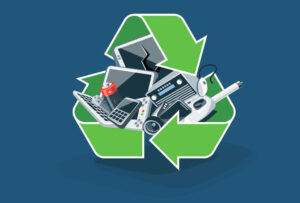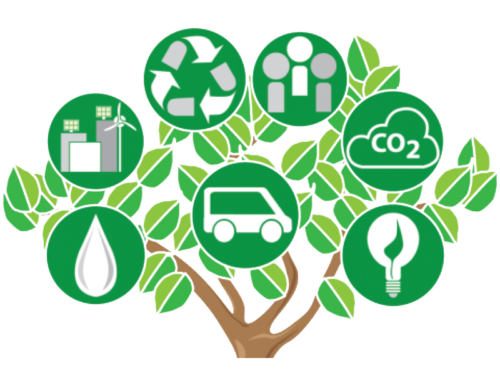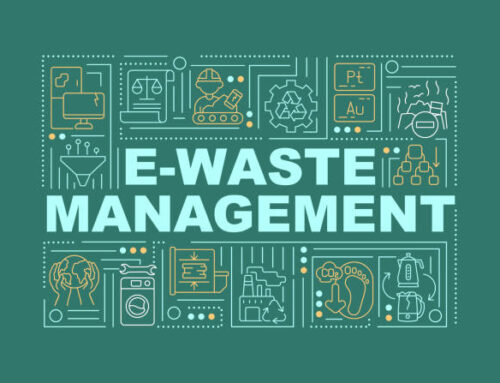
E-waste Management A movement for a better future
Electronic garbage often referred to as e-waste management, gets produced when any electrical or electronic equipment becomes unsuitable for its intended purpose or has passed its expiration date. Old electronic equipment is quickly replaced by new models due to fast technical breakthroughs and the manufacturing of newer electronic equipment.
 It has resulted in the exponential growth of, notably in India. People tend to upgrade to newer models and cutting-edge technology, and product lifespans shorten with time. However, the topic of e-waste handling in India and related complications remains.
It has resulted in the exponential growth of, notably in India. People tend to upgrade to newer models and cutting-edge technology, and product lifespans shorten with time. However, the topic of e-waste handling in India and related complications remains.
E-waste management is a top priority in many developed countries. In contrast, it gets exacerbated in poor nations by totally adopting or imitating industrialized countries’ e-waste management, as well as numerous linked issues, such as a lack of capital and technically qualified people resources.
Moreover, there is a lack of infrastructure and appropriate rules, notably concerning e-waste. Furthermore, the roles and responsibilities of the individuals and organizations in charge of E-waste management are not well stated.
Effects of E-waste:
E-waste is extremely hazardous to human health, wildlife, and the environment. Polymers, alloys, cathode ray tubes (CRTs), printable wires, circuit boards, and other materials are common components of e-waste. After scientific processing, precious metals including copper, gold, silver, and platinum may get recovered from e-waste.
The presence of toxic substances such as liquid crystal, nickel, selenium, cerium, mercury, arsenic, barium, polychlorinated biphenyls (PCBs), and lead makes it hazardous if e-waste gets dismantled and processed in a crude manner using rudimentary techniques. The e-waste recycling company, Delhi keeps the effects in mind and then recycles electronic waste properly.
Process of E-waste Management
The e-waste management company like the e-waste management company, Delhi follows a proper process while recycling the e-waste for better results.
Collection of E-waste
 The collecting of electronic items through trash cans, collection locations, take-back programs, or on-demand collection services is the initial stage in the recycling procedure for e-waste. The combined e-waste is then collected and sent to specialist electronics recyclers.
The collecting of electronic items through trash cans, collection locations, take-back programs, or on-demand collection services is the initial stage in the recycling procedure for e-waste. The combined e-waste is then collected and sent to specialist electronics recyclers.
At this step of the process, best practice demands that e-waste get divided by kind, which is why numerous collection locations will have multiple containers or boxes for different things. This is especially true for e-waste batteries, which require specific treatment and can be extremely hazardous if mixed with other rubbish. The e-waste management company, Delhi, and other NCR parts properly carry out this procedure.
Storage
While secure storage might not always appear to be vital, it is. For instance, the glass globes of Cathode Ray Tube in TVs and computers are heavily polluted with lead. Previously, they get recycled into brand-new computer displays, but due to the advancement of new technologies and the concurrent drop in demand for CRT goods, much of this glass is now merely preserved indefinitely. The e-waste management company Delhi stores all the electronic waste carefully.
Sorting, dismantling, and shredding manually

The e-waste is then manually sorted, with various things such as batteries and lights removed for further processing. Some artifacts may be manually deconstructed at this point for components, repurposing, or the collection of precious materials.
E-waste is subsequently shredded into small bits, allowing for precise material classification, which is an important step in the process. Most electronics get made of a variety of materials, and breaking them down into parts that are only a few millimeters long allows them to be mechanically separated. The e-waste management company, Delhi has a separate department for taking care of the sorting process.
Separation by mechanical methods
Mechanical separation of distinct materials is essentially a series of operations that take place one after the other. Magnetic segregation and water segregation are the two most important phases.
- Separation by Magnetism
The disintegrated e-waste goes through a huge magnet, which can remove ferrous metals like steel and iron from the trash mix. In addition, an eddy current may get employed to separate the nonferrous metals. These metals can then get redirected to smelting furnaces for recycling. At this stage, other materials such as metal-embedded polymers and circuit boards are also separated.
- Separation by Water
Water is to get separate items in a solid waste stream that is now mostly composed of plastic and glass, further filtering for the separation of various polymers as well as hand-sorting visible impurities.


